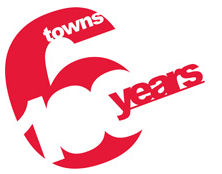31st March 1910 saw the federation of the
six towns to form the County Borough of Stoke-on-Trent
|
Stoke-on-Trent Local
History |
|
|
|
|
| Federation of the six towns 31st March 1910 saw the federation of the six towns to form the County Borough of Stoke-on-Trent |
![]()
![]()
![]()
next: The first Chief Constable
previous: Malkin and Federation
contents: Index page for Federation


Federation article by local
historian - Fred Hughes
Federation and the characters at the first meeting
|
It was exactly 11am on Friday 1st April 1910 that the Hanley auctioneer Walton Stanley and the local oil magnate Sampson Walker climbed out of a chauffeur-driven limousine into the spring sunshine of Winton Square Stoke. Newly-planted blossoming fruit trees surrounding the tall statue of Josiah Wedgwood gave a continental tone to the simplicity of the Jacobean-style gateway to the Potteries. This was going to be a special day.
The Sentinel called it a 'happy augury'. Flags flapped in a cool breeze and coloured streamers cascaded over the front of the hotel. A wooden board had been hastily put up that morning giving notice of the meeting of the incorporation of the new County Borough of Stoke-on-Trent. Until this morning the two men had been Hanley Borough councillors; soon they would become new Stoke-on-Trent councillors. These were the first to arrive for this inaugural meeting of the Federated Borough held in the specially adapted conference room of the North Stafford Hotel while a new council chamber was being built in Stoke Town Hall.
The meeting of the new council had been called for noon and councillors and officials were soon pouring through the lobby. By 11.30 the hotel was a beehive of activity with people filtering into the room that had already been witness to many hostile confrontations as each town fought its corner during the 1908 federation enquiry. Although the general public were permitted to sit in an adjacent room most of these seats were taken by the former town's dignitaries and other VIPs. H Barratt-Greene, the editor of the Sentinel sat between DW Phillips chairman of North Staffs Railways and the distinguished Potteries architect AR Wood. Soon the gathering settled to what they thought would be a short introduction to celebration - but it didn't quite turn out that way.
As the clock at St Peter's Church struck twelve noon, 77 of the 78 new councillors took their seats at six lines of trestle-tables in the order of the wards they represented. A much larger chair and a table were placed on a raised area at one end of the room. Then everyone fell silent as the acting mayor, the Viking lookalike Cecil Wedgwood, marched into the room flanked by the acting Town Clerk, Mr Eustace Joy, on loan from Staffordshire County Council to assist the constitutional process. There was no pomp and no sense of occasion as a makeshift bell was struck to call the meeting to order. And so began the civic business of the new federated council a hundred years after it was first promoted. There were certainly many sceptics present that day who doubted that it would last another hundred years. But there was also great optimism as well. Wedgwood congratulated everyone and read a letter of support from the united local churches following which he introduced the first item of business - the election of mayor.
Incredibly the new council was deadlocked on its very first item. Walker and Stanley naturally took opposite sides as speech followed speech while the guests fidgeted uncomfortably. It took three hours to elect Cecil Wedgwood as Stoke-on-Trent's first ever mayor by the narrow margin of 12 votes. And it was almost 10 o'clock at night when council finally adjourned and the two early-birds climbed back into their limousine. 'I hope these sessions aren't always going to take this long,' said Walker to Stanley, 'otherwise we'll be back to six towns in six months.' |
![]()
![]()
![]()
next: The first Chief Constable
previous: Malkin and Federation
contents: Index page for Federation